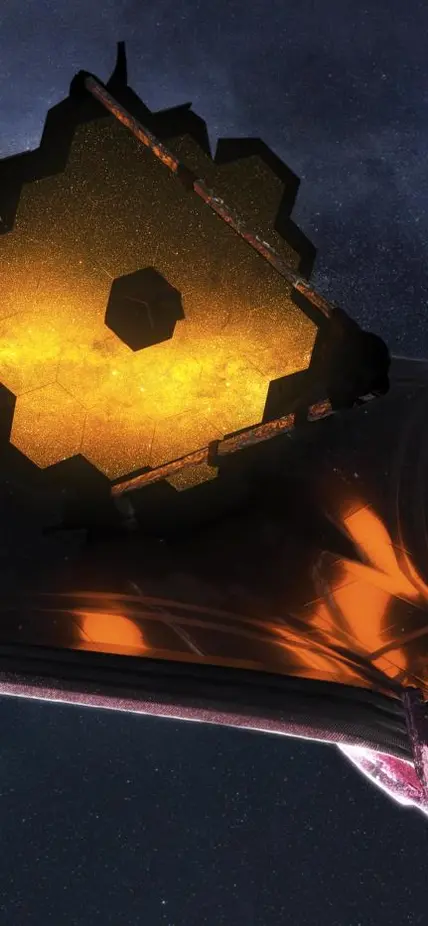Washington, DC—In what will hopefully be a perfect seasonal gift to astronomers around the world, the James Webb Space Telescope is scheduled to launch December 25. This next-generation space telescope will drive a new era of discovery—with capabilities that will complement the upcoming era of extremely large ground-based telescopes, including the Giant Magellan Telescope under construction at Carnegie’s Las Campanas Observatory in Chile.
Several Carnegie astronomers will be among the first to lead projects using data from JWST observations. Their planned investigations will span the breadth of expertise at our Observatories and Earth and Planets Laboratory—from exploring the makeup of distant worlds to revealing the secrets of ancient galaxies and probing cosmological questions.
“Carnegie researchers have been involved with JWST since Observatories staff scientist Alan Dressler chaired the committee that led to its conception 25 years ago,” said Carnegie Science Deputy and Observatories Director John Mulchaey. “The number of Carnegie scientists whose proposals were selected for JWST observing time illustrates the outsized impact that this institution has had on the scientific endeavor. I’m confident that these and future projects will continue to drive discovery in astrophysics, astronomy, and planetary science.”
Earth and Planets Laboratory Staff Scientist Peter Gao will use his observing time on JWST to improve our knowledge of a type of cotton candy like planets called super-puffs, which “have masses of only a few times that of Earth, but sizes like those of the giant planets in the Solar System,” he explains. Gao hopes that the revolutionary space telescope will enable him to reveal the underlying explanation for the unusual densities of this adorably named planetary class.
His EPL colleague Johanna Teske aims to better understand the most-common types of planets in our Milky Way galaxy—called super-Earths or sub-Neptunes—which mysteriously are not found in our own Solar System. JWST will allow her to “try to figure out how much variety there is in these planets’ atmospheric composition,” as well as the phenomena that control this composition, information that could reveal whether or not these “types of planets have the conditions conducive to life.”
Several other Carnegie-connected projects are similarly interested in using JWST’s capabilities to better understand the chemical makeup of celestial objects—but their focus is on galaxies and transient phenomena.
Maria Drout, an Assistant Professor at the University of Toronto and a Visiting Scientist at the Observatories, will harness JWST, “a big telescope that can see infrared light,” to explore the origins of the heaviest elements in the periodic table, which has been a “huge debate for the last 50 years or so.” She hopes this will help refine data on element synthesis from the 2017 neutron star merger detected by LIGO, the optical signal from which was first seen by Carnegie and U.C. Santa Cruz astronomers using our Swope telescope at Las Campanas.
Likewise, Observatories Staff Scientist Gwen Rudie and Carnegie-Princeton Postdoctoral Fellow Allison Strom will use JWST “kind of like a time machine” to “make some of the most-accurate measurements of the chemistry of early galaxies” and gain insights into the very early universe.
Also from the Observatories, Staff Scientist Drew Newman will be exploring a galaxy from the universe’s youth. He’ll be pointing JWST at an ancient galaxy about 10 billion light-years from us to understand why some galaxies stopped forming stars very early on, even though the universe at the time was “a very active place” and most galaxies were “just bursting with star formation.”
Barry Madore, another Observatories colleague, will be using JWST to refine the answer to an even more fundamental cosmological question—the rate at which the universe is expanding, called the Hubble Constant. He and former-Observatories Director Wendy Freedman will be able to simultaneously measure multiple types of celestial distance indicators with the hope of resolving the pending “crisis in cosmology” threatened by the lack of agreement between calculations of the Hubble Constant made using different methods.
Hear more about each of these exciting projects in the astronomers’ own words in the videos below:
MARIA DROUT:
PETER GAO:
BARRY MADORE:
DREW NEWMAN:
GWEN RUDIE & ALLISON STROM:
JOHANNA TESKE:
